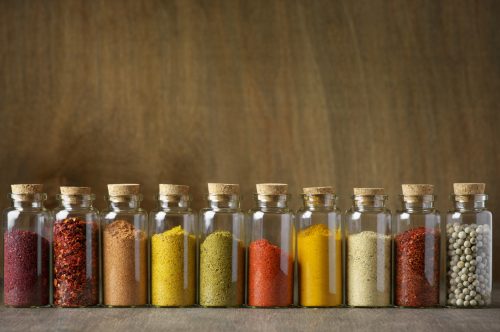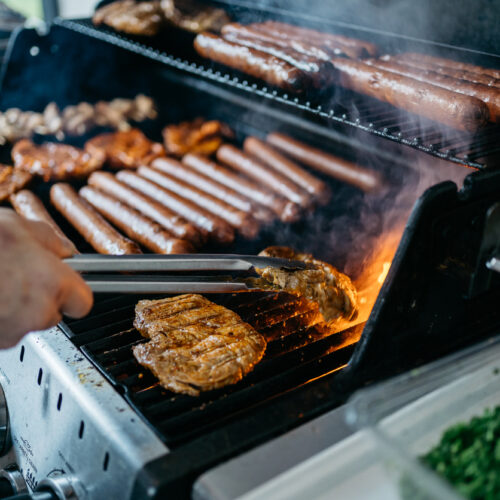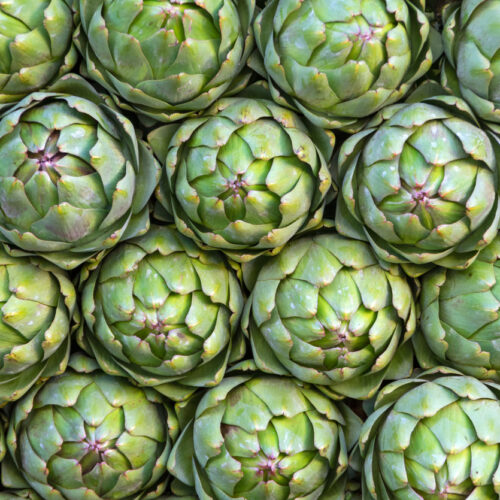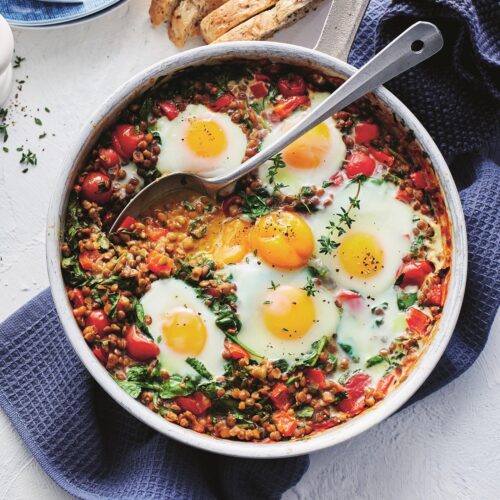
How to make sure you always have healthy ingredients on hand that you’re actually going to use.
Do you ever look in your pantry and wonder what on earth you can cook for dinner with what’s there? Have you got so much ‘stuff’ in your pantry you’re not quite sure what’s lurking at the back? Do you have ingredients in canisters in your pantry that you’re not sure how to use? Or have you been halfway through a recipe to find you didn’t have that essential ingredient you were sure you had? If any of these sound familiar it’s time to give your pantry a makeover!
Okay, this may not sound like the most exciting way to spend a Saturday morning, but jobs, relationships and pantries all have one thing in common: if it’s not working for you, it’s time to make an effort and make some changes!
The list
You may think a good starting point is to pull everything out and see what you’ve got. But what will happen then? Chances are you’ll throw a few select items away and then start shoving it all back in where it came from. That’s not what we want at all!
It’s time to get methodical. First up, think about what you’d like in your pantry if you were starting from scratch.
Smaller pantries mean you have to be more disciplined. Maybe you can store some items elsewhere if there’s space, but make sure you don’t put out-of-sight, out-of-mind items there. If you do that, you may was well save your money now and not buy them.
What to stock
I’ve split the list of pantry items into basics and extras. The basics are examples of items to start with, but everyone’s tastes are different, so modify the list to meet your needs.
When you’re buying extras, or trying different things, make sure you only purchase an amount you can use reasonably quickly, especially with bulkier products that can take up precious space.
One sure way to clog up your pantry is to buy a new item and then not use it up. Do that a few times and you’ve got a pantry full of things you don’t use and suddenly you can’t find the items you do use.
For example if you’re trying a new rice or pasta, try to use that up before you buy another variety. You’ll then know whether it’s something you want to keep in stock, or whether you just want to buy it occasionally. For some things like teas it’s nice to have a wider selection, but don’t get too many or you’ll never find what you want.
Dump the old stuff
It’s time to toss anything that isn’t up to scratch. Food does not last forever.
Pull everything out of the pantry and sort it into piles of similar items. Throw out anything that’s past its expiry date. Opened containers of food need to go into airtight food storage containers or zip lock bags.
How long is too long?
Heat, light and moisture reduce the storage time of many foods so the ideal environment is cool, dark and dry – just like your pantry!
These storage time guidelines assume products are kept in airtight containers.
- Flour: Standard flour generally lasts 8-12 months; wholemeal flour has more oil in it, so it won’t last as long. If it’s getting a bit long in the tooth, dump anything you’re not sure about.
- Rice: Like flours, white rice lasts longer than brown rice as, having the outer parts removed, they don’t contain the oils found in whole grain rice. Brown rice will last around 6 months, but white rice should be okay for 2 years.
- Pasta: Dried pastas keep well for around 2 years.
- Pulses: Dried peas and beans keep well for around 12 months. They will deteriorate with age and may need longer soaking and cooking. Canned legumes will keep for 2 years or more.
- Cereals: For breakfast cereals it’s best to check the pack for a ‘best before’ date. Storage times will vary depending on how ‘dehydrated’ the cereal is and whether they contain whole grains, dried fruit and nuts.
- Drinks: Check opened drinks, like instant coffee or drinking chocolate. If any moisture has got into these they’ll harden and be unusable (the same applies to sugars and salt).
- Herbs and spices: Most herbs and spices older than 12 months can go; they won’t be adding much flavour to your food. Store your new ones in an airtight container to help keep the flavour.
- Oils: Pull out all the oils and give them the ‘sniff test’. Oils oxidise in the presence of air, so they don’t last forever once they’re opened. Rancid oils smell ‘off’, taste bad, contain fewer antioxidants and could be bad for you. Dump them.
- Nuts and seeds: The fat content of nuts and seeds is generally around 50% or more, which means they too will go rancid in the presence of oxygen (and light and heat will speed this up). So don’t buy huge quantities at once, and dump anything that doesn’t smell fresh.
- Dried fruit: Dried fruit will last for around 6-12 months before starting to deteriorate, but some are more susceptible to rehydration than others. Given the chance, sultanas will readily absorb moisture from the atmosphere, which will lead to mould growth.
- Cans: Canned tomatoes, fruit and juices can be kept for 12-18 months. Other low-acid canned foods like vegetable soups (except tomato), vegetables, legumes and spaghetti will last 2 years or more. Any dented, bulging or rusting cans should be discarded.
- Sugars: The only thing that will spoil your sugars is moisture. Keep them dry and they’ll pretty much last ‘forever’.
- Vinegars: Vinegars will keep almost indefinitely.
- Vegetables: Potatoes, onions, garlic, ginger and shallots should last for months in the right conditions, but generally you don’t know how they’ve been stored before you get them home, so it’s safer to buy smaller quantities on a regular basis. You’ll probably be using them regularly anyway.
- Packaged goods: For any packaged goods, a ‘use by’ date means do not use it after that date. If a product has a ‘best before’ date, it means the product quality will deteriorate after that date – you get to make a judgement call about when to give up on it. Note that foods with a shelf-life over 2 years don’t have to carry a date.
If your pantry contains anything more than 12 months old that hasn’t been used, either dump it or, if you believe it’s something you want to use (like those chickpeas you bought and don’t know what to do with), put them at the front of the pantry when you rearrange.
That way they’ll be top of mind. You’ll either make an effort to figure out what to do with them or give it away and dump them.
Putting it together again
Before you put anything back in your pantry, take the opportunity to give the shelves a good clean; pests love the spills and crumbs. Here are our rules for a healthy and organised pantry:
Use airtight containers
Most things are best stored in airtight containers. If you’ve bought something new and you’re not sure of the cooking directions, cut that part off the outer pack and put it in the container with the food. Some things can go into the container in their outer packaging, and it may last longer if you do that and squeeze air out of the pack.
These containers can be as fancy or plain as you like: recycled yoghurt pots; ice cream containers; Gladware from the supermarket; Click Clacks or similar (preferably bought when on sale). Round containers will waste more space than square or rectangular ones. Some things can be stored in zip lock plastic bags to save space.
When you decant flour or other dry goods into your storage containers, unless you know it will be used quickly, use a white board marker to write the ‘best before’ or purchase date on the container.
Planned positioning
For things that you may find tempting – maybe those crackers you bought for occasional use – put them to the back of the pantry or somewhere you won’t see them every time you open the door.
On the other hand, have the things you want to try to use more of – maybe the brown rice and cans of pulses – in a spot where you’ll see them straight away.
Things you’re going to be using all the time, but don’t need to be reminded of – maybe the cans of tomatoes – can go in a less obvious spot as you won’t forget about them.
A place for everything
The easiest way to find things is to have a place for everything and to stick with it (I know, try to tell that to the person always losing their keys). Arrange everything in their categories, so you can quickly find what you want or look at your selection to make a choice.
Restocking
Before you restock – here’s the last rule:
Do not over fill your pantry
Or you will be starting over again in a few months’ time! Ideally you want to be able to see everything that’s in your pantry without moving anything out of the way.
You don’t have to buy everything at once, so keep your list handy and buy a few items each week as different things come on special.
Canned tomatoes and pulses are ideal for bulk buying on special as they last so long, and a few extra cans stashed in another cupboard can be called ’emergency supplies’.
Before you buy anything, think about how long it will stay fresh and plan to buy a quantity you know you will use well within that time.
Bulk bags of nuts may look good value, but if you don’t use them up in good time, you’re either eating nuts that aren’t fresh or throwing some away. Either way – that’s not good value!
For flours, cereals, grains and dried pulses, only buy the amount you’re likely to use in the next month or two. Fresher is better, and if you’re unlucky enough to bring home any pests, you have less to dispose of.
If you want to expand your repertoire of cereals and grains into things like quinoa, buckwheat and barley etc, you may find it’s more economical to visit a whole foods or health food store where these are sold in volume. Higher turnover along with less packaging might mean both a fresher and cheaper product.
Don’t forget bulk bins are great for buying small quantities as well as big quantities. But if you’re buying a small quantity because it may go off, stop and think about how long it may have been sitting in a clear plastic bin in your store.
I know from experience which store to buy Brazil nuts from: the nuts from one of my local stores taste delicious because they are so fresh, but the turnover of Brazil nuts at the other store must be slower, as they didn’t taste as nice at all. If in doubt, just get a small quantity to check: not so convenient, but it will save you in the long run.
Keep it working
Now that you’ve got your pantry how you want it, you can’t just ignore it. It won’t naturally stay that organised.
There will be spills; people will put things in the wrong place and hide an essential ingredient. If you don’t have a strict policy of putting an item on a shopping list when it nears run-out, you won’t have everything at your finger tips.
Your pantry does require maintenance, but here’s the good news: once it is well-organised and working for you, it is much easier to keep it that way.
A moment putting things back in their place or wiping a spill or checking on a regularly used ingredient is all it takes.
Some people like to use a master list of everything in the pantry (possibly even alphabetised or categorised) and tick off things as they need to be re-purchased.
I think I’m pretty organised, but that would be too much even for me. I prefer to do a quick ‘reccie’ of the pantry to update my shopping list as required. I might miss something occasionally, but sometimes things are out of stock in-store too. That’s okay though – if you’ve got a well-stocked pantry you have plenty of alternatives.
Healthy meals based on your healthy pantry
Here’s a few recipes that are based on your new healthy pantry. If you keep your pantry working, you will almost always be able to whip these meals up:
Simple bean soup
Basic risotto
Couscous and chickpea salad
Potato and pea curry
Black and red bean chilli
For more ideas for what to cook when the pantry’s looking bare: Eat well spend less: Running on empty
www.healthyfood.com










